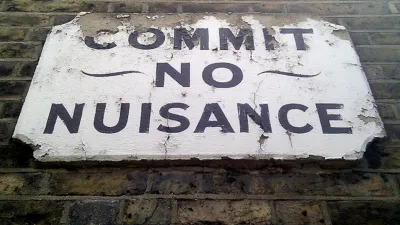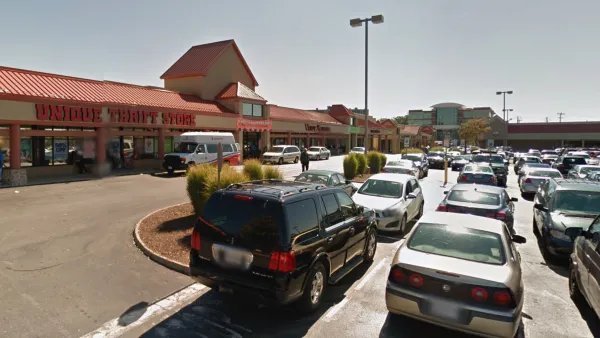The history of how homeowners came to wield expansive power over the development of entire neighborhoods and cities is complex and can't be traced to any one policy or market trend.

Emily Badger explores the rise of the "Not In My Backyard" (NIMBY) movement to power—and its ability to expand its political influence beyond the backyard to the entire neighborhood.
The causes of NIMBY campaigns are familiar. "In Seattle, the neighbors don’t want apartments for formerly homeless seniors nearby," writes Badger. "In Los Angeles, they don’t want more high-rises. In San Jose, Calif., they don’t want tiny homes. In Phoenix, they don’t want design that’s not midcentury modern."
Common among these opposition campaigns is a conviction "that owning a parcel of land gives them a right to shape the world beyond its boundaries," according to Badger, who traces the roots of the idea that the influence of property owners should reach well beyond the property line.
Badger references nuisance laws, schools, race, and advent of citywide zoning in this examination of the exclusionary tendencies of NIMBY campaigns. The article's conclusion is particularly powerful, suggesting how deep a cultural shift will be necessary to disentangle the power of obstructionists from the future needs of cities and communities: "We want people to be invested in their neighborhoods, but not to the exclusion of anyone else who might live there, too. We want to empower neighbors to fight a trash dump, but not to halt every housing project the region needs."
FULL STORY: How ‘Not in My Backyard’ Became ‘Not in My Neighborhood’

Analysis: Cybertruck Fatality Rate Far Exceeds That of Ford Pinto
The Tesla Cybertruck was recalled seven times last year.

National Parks Layoffs Will Cause Communities to Lose Billions
Thousands of essential park workers were laid off this week, just before the busy spring break season.

Retro-silient?: America’s First “Eco-burb,” The Woodlands Turns 50
A master-planned community north of Houston offers lessons on green infrastructure and resilient design, but falls short of its founder’s lofty affordability and walkability goals.

Test News Post 1
This is a summary

Analysis: Cybertruck Fatality Rate Far Exceeds That of Ford Pinto
The Tesla Cybertruck was recalled seven times last year.

Test News Headline 46
Test for the image on the front page.
Urban Design for Planners 1: Software Tools
This six-course series explores essential urban design concepts using open source software and equips planners with the tools they need to participate fully in the urban design process.
Planning for Universal Design
Learn the tools for implementing Universal Design in planning regulations.
EMC Planning Group, Inc.
Planetizen
Planetizen
Mpact (formerly Rail~Volution)
Great Falls Development Authority, Inc.
HUDs Office of Policy Development and Research
NYU Wagner Graduate School of Public Service




























